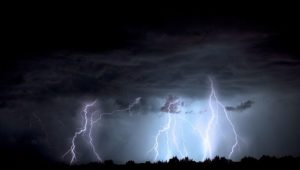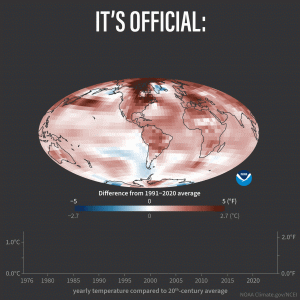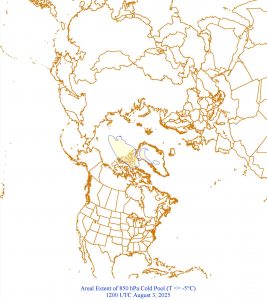Lightning is a huge electrical discharge, or spark, that results from vigorous motions in thunderstorms.

Developed as part of ProbSevere, a statistical model that predicts the probability that a storm will produce severe weather in the near-term, scientist John Cintineo trained a sophisticated machine-learning algorithm to recognize complex patterns in GOES-R Advanced Baseline Imager (ABI) imagery that often precede lightning activity detected by GLM. (Image credit: CIMSS)
Storms are composed of ice crystals and liquid water droplets. Winds inside the storm cause particles to rub against one another, causing electrons to be stripped off, making the particles either negatively or positively charged. The charges get grouped in the cloud, often negatively charged near the bottom of the cloud and positively charged up high. This is an electric field, and because air is a good insulator, the electric fields become incredibly strong. Eventually a lightning bolt happens, and the flow of electrons neutralizes the electric field.
Most lightning flashes reach less than 10 miles. On occasion a lightning bolt can be 60 miles or more in length, and that is referred to as a “megaflash.” They originate in massive convective storm complexes known as mesoscale convective systems. Fewer than 1% of thunderstorms generate megaflash lightning.
The World Meteorological Organization, or WMO, investigates and certifies meteorological records. The record flash occurred on Oct. 22, 2017, was 515 miles in length, running from eastern Texas through Oklahoma, Arkansas and Kansas to near Kansas City, Missouri, in seven seconds. The research team used data from the Geostationary Lightning Mapper sensor aboard a NOAA geostationary satellite to support its measurement.
Lightning can travel from cloud to cloud, within the same cloud, or between the cloud and ground. In-cloud lightning discharges are more common than cloud-to-ground discharges and are not as hazardous.
Cloud-to-ground is the best-known type of lightning, and it poses the greatest risk. On average there are 21 lightning deaths a year in the U.S., down from 55 deaths in 2001 before the start of a national lightning safety campaign: “When lightning roars, go indoors.”
Steve Ackerman and Jonathan Martin, professors in the UW-Madison department of atmospheric and oceanic sciences, are guests on WHA radio (970 AM) at noon the last Monday of each month. Send them your questions at stevea@ssec.wisc.edu or jemarti1@wisc.edu.





